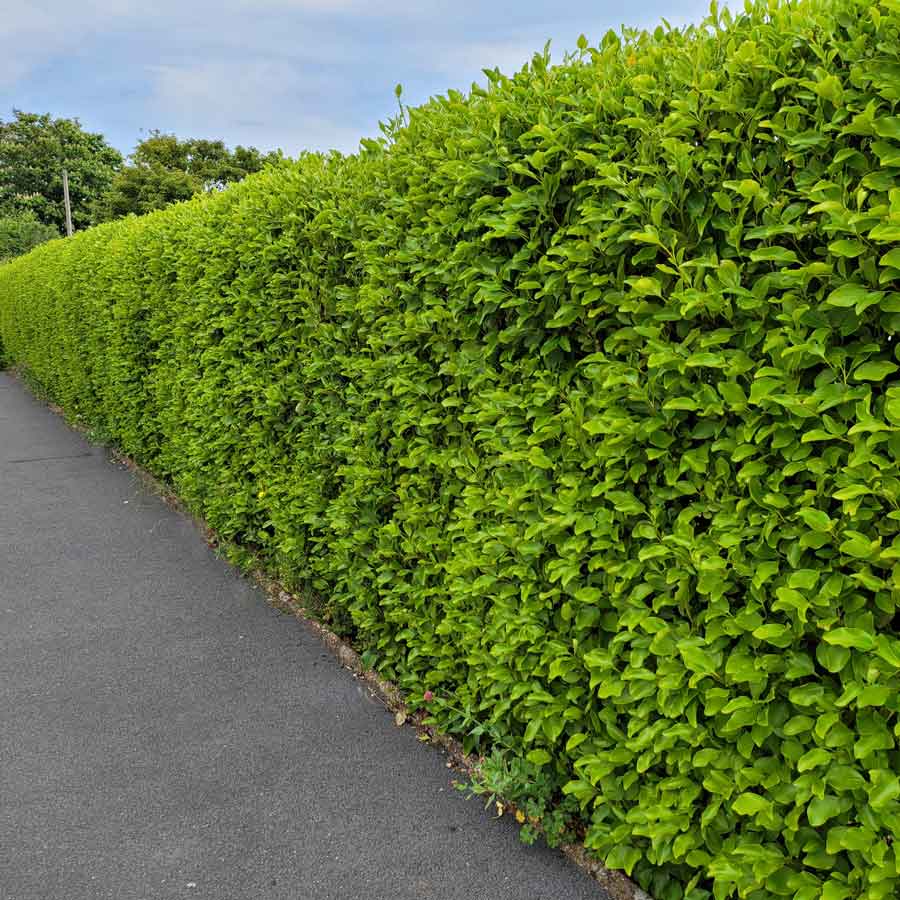What is the maximum height of a hedge between neighbours? A Complete Guide to Boundary Regulations

Hedges are a popular choice for creating boundaries and enhancing privacy in residential areas. However, disputes between neighbors regarding the height of these green barriers can lead to tension and misunderstandings. Understanding the regulations surrounding hedge height is essential for maintaining good relations and adhering to local laws. This comprehensive guide explores the maximum allowable height of hedges between properties, highlighting the legal frameworks, potential exemptions, and best practices for resolving conflicts. Whether you are a homeowner considering planting a hedge or facing issues with an existing one, this article aims to provide clarity on boundary regulations and promote harmonious coexistence.
What is the Maximum Height of a Hedge Between Neighbours?
The maximum height of a hedge between neighbours can vary significantly depending on local laws and regulations, as well as the type of hedge planted. In many regions, guidelines suggest a typical maximum height of 2 meters (approximately 6.5 feet) to avoid obstructing sunlight or views, but this can differ based on local council regulations. If a neighbour finds a hedge to be excessively tall and impacting their property, they may raise concerns that can lead to disputes or legal action, making it essential for homeowners to be aware of their local laws regarding hedge height to maintain cordial neighbourhood relations and avoid possible penalties.
Local Laws and Regulations
Local laws governing hedge height can differ from one area to another, with some councils enforcing specific limits to minimize disputes between neighbours. Generally, these regulations might stipulate that hedges should not exceed a certain height, often around 2 meters, and may require a formal complaint process to address any issues. It’s advisable for homeowners to check with their local government or municipality regarding any relevant ordinances before planting new hedges or when considering existing ones.
Impact of Hedge Height on Neighbour Relations
The height of a hedge can significantly affect relationships between neighbours. Overly tall hedges may block sunlight, create privacy concerns, or obstruct views, leading to tension. Open discussions between neighbours about hedges can help establish boundaries and avoid misunderstandings. In many cases, neighbours may agree on trimming the hedge to a mutually acceptable height, fostering a spirit of cooperation and ensuring that the community atmosphere remains friendly and respectful.
Common Types of Hedges and Their Heights
Different types of hedges grow to various heights and can have specific growth habits. For instance, laurel and privet are common choices for hedges and can reach heights of up to 3 meters or more, but homeowners must be cautious about local restrictions. Conversely, boxwood or bamboo may be suitable alternatives if a lower height is desired. It is critical for homeowners to select hedge varieties that align with local regulations while also considering their aesthetic and practical uses.
Dispute Resolution for Hedge Height Issues
When disputes arise regarding hedge height, many areas encourage neighbours to resolve conflicts amicably before escalating to legal actions. Mediation services or community resources can provide assistance in facilitating discussions between parties. If necessary, local councils may offer official complaint procedures where individuals can formally address the hedge height issue, potentially leading to inspections and recommendations for resolution. Seeking a peaceful resolution often proves beneficial in maintaining good neighbourly relationships over the long term.
Consequences of Ignoring Hedge Height Regulations
Ignoring hedge height regulations can lead to significant consequences, including legal action or fines imposed by local councils. Neighbours might file formal complaints if they feel their quality of life is impacted by excessively tall hedges. Homeowners may be required to trim or even remove the hedges if found in violation of local laws. To avoid such complications, it is prudent for homeowners to remain informed about the applicable regulations relating to hedge height and act accordingly.
| Hedge Type | Typical Height | Local Regulation Height |
|---|---|---|
| Laurel | Up to 3 meters | 2 meters |
| Privet | 2-3 meters | 2 meters |
| Boxwood | 1-2 meters | 1.5 meters |
| Bamboo | Up to 4 meters | 2 meters |
What can I do about a neighbour's overgrown hedge?

If you are dealing with a neighbour's overgrown hedge, there are several steps you can take to address the situation carefully and respectfully. Here are some methods you could consider:
Understand Local Regulations
Before taking any action regarding your neighbour's overgrown hedge, it's essential to familiarize yourself with any local regulations or ordinances. These laws may dictate how tall hedges can be and whether your neighbour is violating any rules.
- Check with your local council or municipal office regarding hedge height regulations.
- Review any neighbourhood association rules that may apply if you live in a governed community.
- Document the height of the hedge and any impacts it is having on your property.
Communicate with Your Neighbour
Often, a friendly conversation can resolve issues related to overgrown hedges. Approach your neighbour in a respectful manner to discuss your concerns about the hedge.
- Choose a suitable time to talk when they are not busy or distracted.
- Express your concerns politely and mention how the hedge impacts your property.
- Be open to their point of view and listen to any reasons they may provide for not trimming the hedge.
Offer Assistance
If your neighbour seems overwhelmed by the maintenance of the hedge, consider offering your help as a way to encourage them to take action.
- Offer to help with trimming if you have the tools and the know-how.
- Provide recommendations for reputable landscaping services if they seem interested.
- Offer to share the costs of hiring professionals to assist with the work.
Trimming Legal Boundaries
If your neighbour is unresponsive and the hedge continues to pose a problem, you may have the legal right to trim the hedge yourself, depending on local regulations.
See also:
- Research the property line to ensure you are within your rights to trim the hedge.
- Know the legal height limits of the hedge as established by local laws.
- Be cautious and avoid causing any damage to your neighbour's property in the process.
Seek Mediation or Legal Help
If all else fails and the hedge continues to affect your property negatively, you may need to consider mediation or even legal options.
- Contact a mediator to facilitate discussions if direct communication has failed.
- Consult with a lawyer experienced in property disputes for further advice.
- File a formal complaint with local authorities if the situation warrants legal action.
Who is responsible for cutting the top of a hedge?

The responsibility for cutting the top of a hedge typically falls on the property owner who has planted or maintains the hedge, though there may be specific local regulations or agreements that affect this duty. Here are some factors that determine who is responsible:
- Ownership: The owner of the property that the hedge is on usually has the responsibility for its maintenance. This includes trimming the top of the hedge to keep it at a manageable height and ensure it does not encroach on neighboring properties or pathways.
- Local Regulations: Some municipalities have specific regulations or codes about hedge height and maintenance. Owners must comply with these rules, which may dictate when and how often hedges must be trimmed.
- Neighboring Property Rights: If a hedge extends into a neighbor's property, the responsibility for its maintenance may involve both parties, as they may have to come to an agreement regarding its height and upkeep.
- Homeowners Associations (HOA): In certain communities, an HOA may have guidelines regarding the maintenance of hedges, including the frequency and height of cuts. Homeowners in these areas must adhere to those rules to avoid penalties.
- Professional Services: Some property owners may choose to hire professionals to take care of hedge maintenance. In such cases, while the responsibility lies with the owner, the actual cutting may be performed by landscape professionals or gardening services.
Property Owner Responsibilities
The primary responsibility for cutting the top of a hedge lies with the property owner. This includes ensuring that the hedge is kept to a height that is aesthetically pleasing and does not obstruct views or sunlight for neighbors.
- Regular maintenance is essential to prevent overgrowth.
- Property lines must be respected when trimming.
- Consultation with neighbors can help maintain good relations.
Local Ordinances and Regulations
Each locality may have its own ordinances regarding hedge height and maintenance. Property owners should be aware of these regulations to avoid legal issues.
- Research local laws regarding hedge height restrictions.
- Check if permits are needed for significant trimming.
- Understand the penalties for non-compliance.
Neighbor Interaction
Interactions with neighbors can play a crucial role in hedge maintenance responsibilities. Open communication is vital to address any concerns regarding height or encroachment.
- Discussing hedge height with neighbors can prevent disputes.
- Invite neighbors to participate in trimming schedules.
- Consider reaching agreements on shared hedge maintenance.
Homeowners Association Guidelines
For properties in communities governed by a Homeowners Association (HOA), there may be specific rules regarding hedge maintenance that owners must follow.
- Review the HOA guidelines before planting or trimming hedges.
- Attend HOA meetings to stay informed about any changes in rules.
- Report non-compliance by neighbors to the HOA, if necessary.
Hiring Professional Help
Some property owners may opt to hire professional landscapers to manage their hedge maintenance. This can alleviate the stress of ensuring the hedge remains properly trimmed.
- Find a reputable landscaping service that specializes in hedges.
- Get multiple quotes to compare pricing and services.
- Schedule regular maintenance to keep hedges healthy and well-shaped.
What is the best height for a privacy hedge?

The best height for a privacy hedge typically ranges from 5 to 15 feet (about 1.5 to 4.5 meters), depending on several factors including your specific needs, local regulations, and the type of plants you choose. A hedge that is at least 6 feet tall will generally provide a good level of privacy from neighbors and passersby. However, for maximum effectiveness, you might want to consider an even taller hedge if you live in a dense urban area or if you desire complete seclusion.
Factors to Consider for Hedge Height
When determining the optimal height for your privacy hedge, consider the following factors:
- Purpose: Assess the primary reason for the hedge; whether it’s for blocking noise, visual privacy, or wind protection.
- Local Regulations: Check any zoning laws or homeowners' association rules regarding plant height.
- Surrounding Environment: Look at the height of nearby structures and plants that may affect the perception of privacy.
Types of Hedges for Privacy
Different types of hedges offer varying heights and densities, which can influence your selection:
See also:
- Deciduous Hedges: These can lose their leaves in winter but may reach impressive heights during the growing season.
- Evergreen Hedges: Maintain their foliage year-round and typically provide consistent privacy.
- Mix of Species: A combination of different plant types can enhance visual interest and provide diverse privacy options.
Maintenance and Growth Rate
The maintenance required and growth rate of your chosen hedge will also dictate the ideal height:
- Fast-growing Plants: Some varieties can reach desired heights quickly but may require more frequent trimming.
- Slow-growing Plants: These hedge types require patience but often have a more robust structure.
- Regular Maintenance: Plan for regular pruning to maintain your hedge at your desired height.
Impact on Property Value
A well-maintained privacy hedge can contribute positively to the overall aesthetics of your property:
- Curb Appeal: A lush, tall privacy hedge enhances the visual attractiveness of your home.
- Boundary Definition: It clearly defines property lines, which can be appealing to potential buyers.
- Eco-Friendly Feature: Hedges provide habitat for wildlife and can indicate sustainability to prospective buyers.
Seasonal Considerations
The effects of seasons on your privacy hedge height should be taken into account:
- Winter Appearance: Decide if you prefer an evergreen hedge that maintains privacy during winter months.
- Summer Growth: Some hedges grow significantly in summer, which may affect privacy temporarily.
- Seasonal Care: Adjust maintenance practices according to the season for optimal growth.
What is the best boundary hedge for privacy?

The best boundary hedge for privacy is one that offers height, density, and year-round foliage. Various plant species can serve as effective privacy hedges, depending on the climate, soil condition, and personal preferences. Some of the top choices for boundary hedges that provide privacy include:
1. Leyland Cypress - This coniferous tree grows rapidly and can create a dense screen.
2. Privet - A hardy shrub that is easy to maintain and can grow to several feet tall.
3. Boxwood - Known for its dense foliage, boxwood can be shaped and trimmed to meet your privacy needs.
4. Thuja Green Giant - A fast-growing evergreen that can reach heights of 30 to 50 feet.
5. Laurel - A thick shrub that provides excellent privacy and can withstand heavy pruning.
The Ideal Characteristics of a Privacy Hedge
A suitable privacy hedge should possess certain characteristics to ensure effective screening.
- Height: Hedges need to be tall enough to block views, typically around 6 feet or more.
- Density: The more densely packed the foliage, the better the privacy it provides.
- Year-Round Foliage: Evergreens are often preferred as they retain leaves year-round, unlike deciduous varieties.
Popular Choices for Privacy Hedges
There are numerous species that are considered ideal for privacy hedges; each brings unique benefits.
- Eastern Red Cedar: This evergreen is known for its high resistance to pests and diseases.
- Yew: A slow-growing evergreen that can be well-trimmed and shaped for a more formal appearance.
- Ficus Carica: Known as the Fig tree, it can grow tall and wide, providing excellent cover.
Maintenance Considerations for Privacy Hedges
To keep your privacy hedge thriving, regular maintenance is crucial.
- Pruning: Regular trimming helps maintain the desired height and shape.
- Watering: Newly planted hedges require frequent watering until established.
- Pest Control: Monitoring for pests is important, as some hedges can attract unwanted insects.
Choosing the Right Location for Your Hedge
The placement of your privacy hedge can significantly impact its effectiveness.
- Sunlight: Ensure the selected location receives appropriate sunlight for the plant species chosen.
- Soil Quality: Test the soil to ensure it’s suitable for growth; amend as necessary.
- Spacing: Proper spacing between plants is essential for airflow and growth.
Benefits of Using Hedges for Privacy
Beyond simply providing privacy, hedges offer a range of additional benefits.
- No Noise Pollution: A thick hedge can act as a sound barrier.
- Wildlife Habitat: Hedges provide shelter for various wildlife species.
- Aesthetic Appeal: They can enhance the overall look of your property and offer seasonal interest.
Questions from Our Readers
What is the legal maximum height for a hedge between neighbors?
The maximum height of a hedge between neighbors can vary depending on local regulations and ordinances. In many places, this height is often set at 2 meters (approximately 6.5 feet). It's important to check with your local council or authority to ensure compliance with specific local laws.
Are there any restrictions on hedge planting near property boundaries?
Yes, there are usually restrictions on planting hedges near property boundaries to avoid disputes with neighbors. Many local regulations require that hedges be planted a certain distance from the boundary line, and the height may also be regulated in these zones.
See also:
What should I do if my neighbor's hedge exceeds the allowed height?
If your neighbor's hedge exceeds the allowed height, you should first try to discuss the issue amicably with your neighbor. If this does not resolve the problem, you may need to contact your local council or a mediating service to explore your options and ensure that the issue is handled properly.
Can I trim my neighbor's hedge if it is too tall?
Generally, you cannot trim your neighbor's hedge without their permission, even if it is considered too tall. You have the right to trim any branches that overhang onto your property, but it is best to communicate with your neighbor before taking any action to prevent further disputes.

If you want to read more articles like What is the maximum height of a hedge between neighbours? A Complete Guide to Boundary Regulations, we recommend you check out our Hedges category.
Leave a Reply
Related Articles